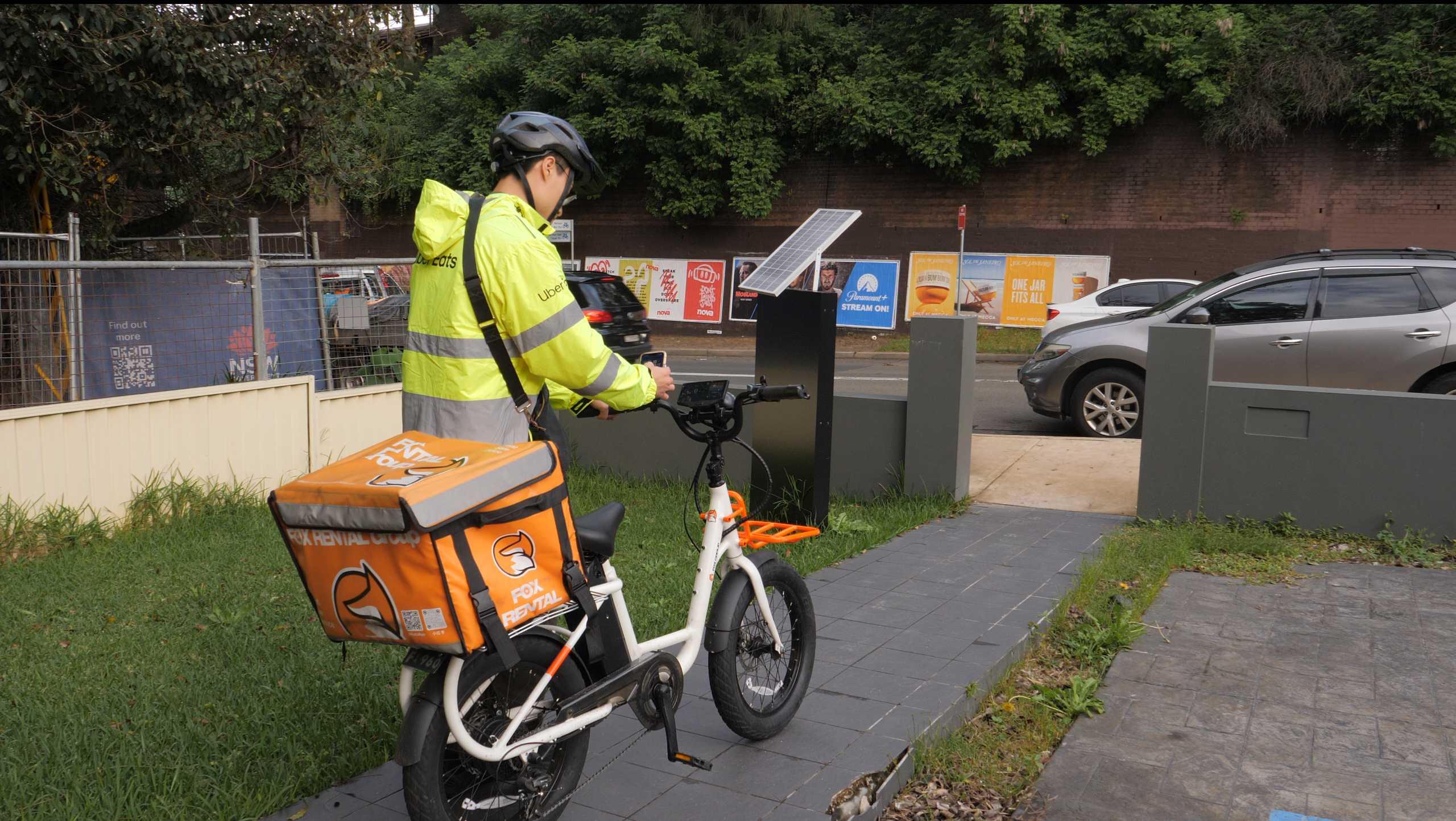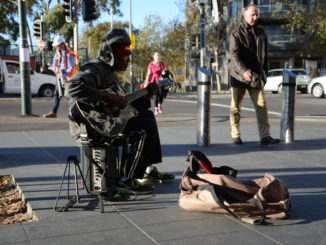New Package of International Riders' dilemma
⌈Produced by Lyn Zhan & Voiceover by Leo Shi⌋

Delivery Platforms and Gig Economy
In Australia, the primary food delivery platforms are Uber Eats, Menulog, and DoorDash. HungryPanda and Fantuan are two other niche food delivery apps, primarily serving Chinese-speaking customers.
These platforms promote the flexibility and freedom of being a food delivery driver as their gig job. Riders can choose whether to work in their free time.
According to the NSW Government report “Work Health and Safety of Food Delivery Workers in the Gig Economy“, Food Delivery Workers as a group are typically under 30, male, and in Australia on student visas.
They tend to cluster in densely populated areas and have typically been in their job for less than a year. This accords with the preponderance of student visa holders
International Students as Food Delivery Riders
Self-employed rider without minimum wage

Yiqi Han, a 24-year-old postgraduate student at the University of Sydney, takes a part time job as a delivery rider on both Uber Eats and HungryPanda.
Han shared his experiences as an international student navigating the challenges of food delivery work in Australia.
“When we register for a tax file number, we’re actually considered self-employed,” said Han. “That means there’s no employer-employee relationship. We don’t have things like formal labour contracts or protections, and no guaranteed minimum wage under NSW law.”
“Your income depends entirely on the platform’s algorithm, and how many orders you can grab.”
———— Yiqi Han
Han revealed to us that the pay per order on the HungryPanda decreases to $4.45 as more riders join the platform. While the minimum wage in Australia is $24.1 per hour since July 1, 2024.
“It’s hard to deliver 5 or more orders within an hour, especially in the city of Sydney. There are too many people and the traffic is horrible, ” Han complained. “Even worse, there are no bicycle lanes in the CBD. We have to ride either on the footpath or on the road with cars.”

He also spoke about the dangers drivers face during their rides: “Sydney has a lot of really steep hills. When it rains, the roads get so slippery — sometimes it feels too dangerous to ride.”
Han has been lucky enough to avoid any serious accidents so far. But for Youlong, things were very different.
Injury, insurance and compensation
Youlong is a 25-year-old electrical engineering student at the University of New South Wales from Fujian province, China. He had only worked for Uber Eats for two weeks when he had an accident in April that left him with a broken arm.
The accident was caused by a brake failure on his e-bike during a downhill ride. He crashed into a power distribution box and broke his arm.
Youlong rented this e-bike from a local e-bike shop, as Uber Eats does not provide rental services for riders.

Youlong told us that his insurance was an income protection scheme. It offers compensation based on the length of time a rider is unable to work due to an accident. But it doesn’t cover the AUD $2000 he spent on medical expenses.
Moreover, due to the lengthy approval process, Youlong has not yet received any compensation.
“The hourly wage is not stable. You can only wait for the platform to give you orders, sometime there are no orders in an hour.”
———— Youlong
“And I don’t know it’s because the algorithm balancing the number of each rider’s orders or there are just no people ordering anything.” Youlong complained to us about the waiting time of Uber Eats.
According to the Uber Eats website, the platform collaborates with Chubb Insurance to provide a support package at no extra cost for its partners, including delivery riders.
Notably, the coverage excludes any time outside active delivery, including when riders are waiting for orders or commuting between jobs.
This means that if an accident occurs while riders are waiting for their next order, they are not eligible for any compensation — neither for themselves nor for any damage to their property.

The Dilemma of International Riders
In Australia’s city centres, food delivery riders have become an invisible part of urban life, making people’s life more convenient through severe weathers.
However, the dilemma they face is low wages, algorithmic control, safety risks and social invisibility.
We interviewed Decheng Sun, a solicitor and industrial officer at the National Tertiary Education Union (NTEU). He is an expert in labour law and previously served as a legal officer for the Australian Workers’ Union.
Mr. Sun pointed out: “Since riders are considered as independent contractor, the law recognize they’re equal to the platforms. If they want to claim their entitlements, they have to go to the court themselves. It’s very expensive and burdensome for workers, particularly workers who come from an international background.”
They’re kind of second-class workers. They’re not having any kind of entitlement at all, to be honest.
———— Decheng Sun
“They face as much risk as they run their own business, but in return they get very minimal income for the efforts they put into it,” Mr. Sun explained. “These platforms afforded liberty for workers to choose their shifts. But the liberty they were afforded cannot be compared to other contractors——like plumbers, lawyers or doctors.”
I think minimum wage is human rights. It should be afforded to every worker in our community.
It is to prevent modern slavery because these workers without the protection they are treated as slaves basically.
———— Decheng Sun
Mr. Sun emphasized, from a general legal perspective, the urgent need for stronger community-level frameworks.
But how far has rider protection actually progressed?

The State of Rider Protections
On August 28, 2024, the Transport Workers’ Union of Australia (TWU) lodged an application with the Fair Work Commission seeking a Minimum Standards Order. This order aims to cover employee-like workers who perform digital platform work related to the transport of food, beverages, and similar items by road.
If accepted, this would establish legally enforceable minimum standards for food delivery riders working for platforms such as Uber Eats and DoorDash.
However, due to the prolonged consultation process, the employee-like minimum standards order is still under intense discussion among various stakeholders as of late May 2025.
As a result, minimum wage protections have yet to be implemented.
Word Count: 1033 (Exclude the caption of pictures)




Be the first to comment